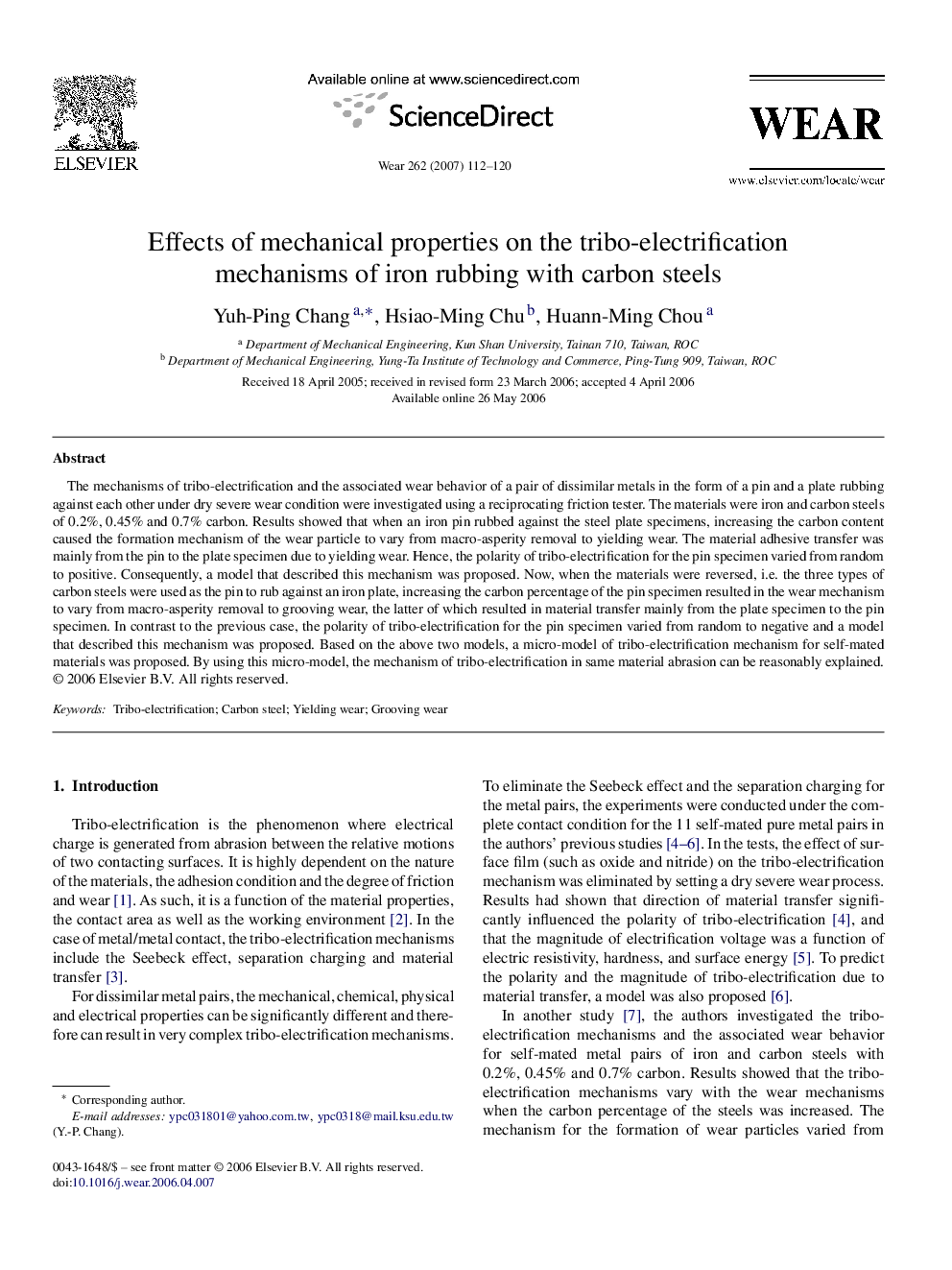| Article ID | Journal | Published Year | Pages | File Type |
|---|---|---|---|---|
| 619488 | Wear | 2007 | 9 Pages |
The mechanisms of tribo-electrification and the associated wear behavior of a pair of dissimilar metals in the form of a pin and a plate rubbing against each other under dry severe wear condition were investigated using a reciprocating friction tester. The materials were iron and carbon steels of 0.2%, 0.45% and 0.7% carbon. Results showed that when an iron pin rubbed against the steel plate specimens, increasing the carbon content caused the formation mechanism of the wear particle to vary from macro-asperity removal to yielding wear. The material adhesive transfer was mainly from the pin to the plate specimen due to yielding wear. Hence, the polarity of tribo-electrification for the pin specimen varied from random to positive. Consequently, a model that described this mechanism was proposed. Now, when the materials were reversed, i.e. the three types of carbon steels were used as the pin to rub against an iron plate, increasing the carbon percentage of the pin specimen resulted in the wear mechanism to vary from macro-asperity removal to grooving wear, the latter of which resulted in material transfer mainly from the plate specimen to the pin specimen. In contrast to the previous case, the polarity of tribo-electrification for the pin specimen varied from random to negative and a model that described this mechanism was proposed. Based on the above two models, a micro-model of tribo-electrification mechanism for self-mated materials was proposed. By using this micro-model, the mechanism of tribo-electrification in same material abrasion can be reasonably explained.
